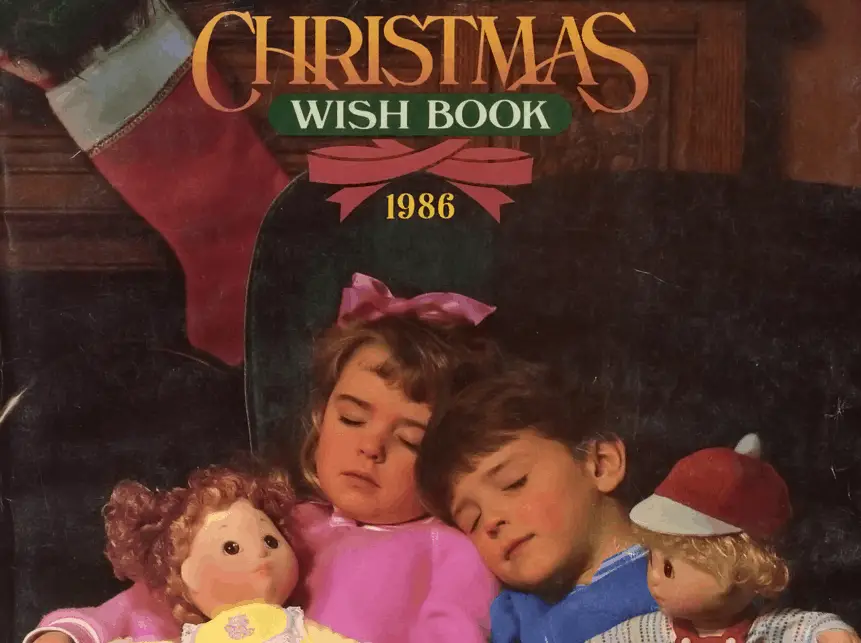
Each year, there is always a standout toy. In the 80s, it seemed like every toy that came out was one of the most epic of all time. This might not be a coincidence as the 80s were a time of deregulation in children’s programming.
The quick story of deregulation is that Ronald Reagan had lifted all the restrictions that were in place that limited the amount of advertising that could be done to kids. With nothing holding them back, manufactures had free reign to put out as many toys – and related cartoons – as they wanted. This is why you see an explosion of pop culture in the 80s with licensed characters rising by over 300%.
This article will look at the best-selling toys from 1980-1989 and how they would be the hot-selling toy for Christmas each year.
What Makes For A Best-Selling Toy?
It usually comes down to demand, promotional hype plus a lack of inventory. If you know something is scarce, it drives up the value. When you combine all of these things with Christmas, you’ve got a time bomb on your hands.
There have been some notable toy crazes over the years – none much bigger than the Cabbage Patch Kids craze of 1983, which we’ll get to in a minute. A big part of what makes a best-selling toy is a strong marketing campaign which makes a kid want the toy more than life itself.
Showing kids playing with said toy can help make the viewing child put themselves into the situation and imagine themselves playing with it. You then add the variable of ‘pester power’ which is exactly what it sounds like.
Pester Power is very real, and it works. This is basically a kid whining for something so much that parents eventually give in. Manufacturers know this pester power helps to drive a majority of a family’s purchases. Dining out, grocery shopping, and even vacations are determined by kids at least 80% of the time.
Sometimes, there is no rhyme or reason for what makes the hottest toy each Christmas. Notable examples include things like the Furby or Hatchimals. What becomes hot is not always a perfect science and they can just happen organically.
When the best-selling toy is more of a fabrication, a big component of that is ‘scarcity marketing’. Once the interest is driven up into a hot new toy – or any coveted product – marketing the fact that there are limited supplies drives up the demand.
You see this all the time with airlines and hotels that claim there are only “a few seats left”. Parents scared of not being able to come through for their kids at Christmas panic and that leads to higher demand, and in the worst-case scenario, chaos in the stores.
Just picture Dwight selling Princess Unicorn…
Some Honorable Mentions
Before we get to the best-selling Christmas toys of the 80s, it’s worth pointing out a few from the late 70s that would become staple items for kids in the 80s.
In 1977 you, of course, had Star Wars. These action figures really kicked off the modern era of what toys could be. You had all the familiar characters, vehicles, accessories, and playsets. It’s pretty common knowledge now but Kenner was the toy company that won the Star Wars contract with some other notable ones, unfortunately, turning it down.
The problem was that Kenner had only wanted to put out a line of modest space toys so when Star Wars was a monster hit they were totally caught off guard. This led them to create the infamous “empty box campaign.” Since there were no figures available, kids could buy an empty box that a cardboard display stand and a coupon they could send to Kenner. When the figures were ready (sometime between May and July) they would be mailed out.
This sounds like a disaster in the making, but it actually worked, and we know how successful the Star Wars toy line would be continuing into the 80s with the Empire Strikes Back and Return of the Jedi.
In 1978 the popular Simon toy came out which seemed to exist in every house still going into the 80s.
There was also 1979 and the release of the Atari – another staple object of the 1980s. It was hands-down the number one selling toy of that year, and Christmas, and its use would carry over into the 80s until the E.T. Atari video game came out and crippled the entire video game industry.
O.K, so let’s look at the best-selling toys at Christmas for each year in the 80s. A lot of this data comes from The National Museum of Play along with Insider.com
1980 – The Rubik’s Cube

The Rubiks Cube is a pretty amazing story of a simple item meant to help math students and then became one of the best-selling toys of all time. The Rubiks Cube was invented by Erno Rubik in 1975. Rubik was an inventor, architect, and professor.
While working as a professor at the Budapest College of Applied Arts, he would often come up with 3 Dimensional objects as a way to teach his students about space alteration. He wanted to help change their thinking when it came to architecture. The first cube was made up of blocks of wood and rubber bands, but the main idea was still there.
The first commercial version would be released in Hungary and was called the “Magic Cube”. Ideal Toys would then license it but release it as the Rubik’s Cube in 1980.
And to say it was a hit was an understatement. Not only was it the best-selling toy of 1980 – and found under every tree that Christmas – it was one of the best-selling toys EVER.
It would also lead to the incredible cartoon, Rubik, The Amazing Cube which you can read all about in my blog here.
1981- Smurfs
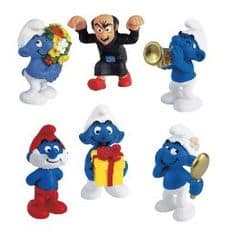
If I have to explain what a Smurf is to you, you’re in the wrong place. The idea of the Smurfs goes as far back as 1958. After that, they became used in things like comic books before making their way to TV.
The Smurfs were created as a Dutch comic franchise by an artist known as Peyo. They were first called the ‘Schtroumpf’, which apparently was a made-up word by the artist when he couldn’t remember the French word for salt. It sounds like he was taking part in some other Dutch traditions before the meal…
The cartoon show debuted on September 12, 1981. The show was a massive hit for NBC and was the winner of awards for excellence in children’s programming. It would also be nominated for Daytime Emmys.
Before 1981, Smurf merchandise was limited to a few small figurines. When the show launched, it resulted in an avalanche of Smurf merchandising including toys, lunch boxes (which I had), plush dolls, even cereal (check out my article about the best 1980s cereals here). Over 300 million Smurf figures alone have been sold over the years.
Smurf toys were the perfect Christmas gift, and they made a big splash in 1981.
1982 – My Little Pony
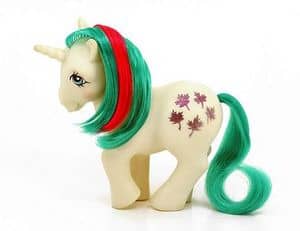
A favorite of Bronies everywhere. I grew up with a sister and was all too familiar with My Little Pony. This toy was a juggernaut and would be under many trees during the Christmas of 1981. It would lead to the very popular cartoon show, movies and a toy line that has lasted for decades.
Everything started with ‘My Pretty Pony’ in 1981 before it was relaunched as My Little Pony in 1982. That first line of toys started with 6 small but colorful ponies known as ‘Generation 1’. When I mentioned that whole issue about deregulation and advertising to children, a few specific shows were seen as the first to take advantage of it. Notable offenders would be G.I. Joe, Transformers, but also My Little Pony. The cartoon show served as basically a 22-minute commercial to sell the toys.
But it worked. By the end of the 80s, 150 million My Little Ponies had been sold and still remains a Billion dollar property today.
1983- Cabbage Patch Kids
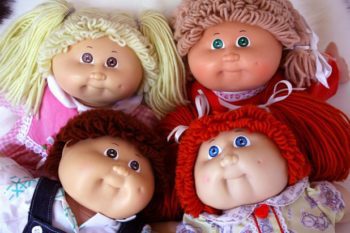
The definitive must-have Christmas toy – maybe of all time – and the toy that started what a true toy craze could be. People had bones broken to get these things in 1983 and it seemed to set the stage for what retail hell could be with events like Black Friday.
The Cabbage Patch Kids started as a simple fabric-based toy created by Martha Nelson Thomas. She wanted to create a doll that looked like a baby, and could actually be played with – unlike porcelain dolls that were for display only.
This idea seems to have been “borrowed” by Xavier Roberts who made them into the version you know today. Remember how I said the factors that make a hot toy are popularity, demand, and scarcity? Well, the Cabbage Patch Kids had this in droves – not to mention this all being combined at Christmas.
They hit the market in the fall of 1983 for the perfect lead up to Christmas. It’s hard to pinpoint the exact reason they caught on like wildfire but between perfect commercials, originality, uniqueness, and news reports, it created the perfect storm.
Scarcity is probably what really lit the powder keg as once the demand started to raise, there were simply not enough to go around. The average store was carrying 200 to 500 dolls max but had THOUSANDS of customers trying to get them. This is what lead to the riots, trampling, and damage sustained to stores and people.
Basically, parents will do whatever it takes to provide for their kid and Cabbage Patch Kids emerged as some sort of necessity like food or shelter. My theory of why they were so popular is due to their uniqueness. Most every doll was different and this made each one feel more special to a kid as no one else probably had the one they did.
When you buy a He-Man, you are getting the exact same one that thousands of other kids have. With a Cabbage Patch Kid, you had one more specific to you. This is because Coleco made 9 different heads that were computer matched with the bodies. This lead to multiple variations, and, ultimately, more uniqueness. There was also the adoption aspect that made this feel more like a belonging than just a “toy”.
This is a pretty amazing story and you can read more about it in my blog on The Cabbage Patch Kids.
1984 – Transformers
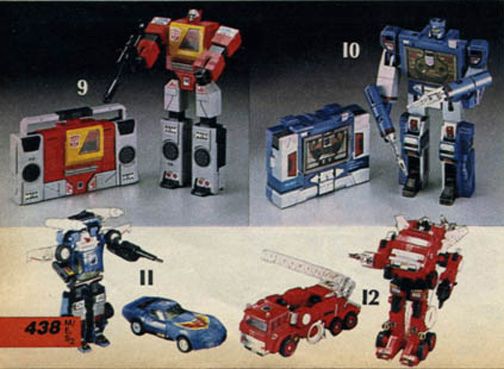
To me, it’s the best toy of all time. You’ve got the perfect combination of robot/alien/battle/novelty all rolled into one. They also weren’t just transforming robots, but one with amazing backstory and characters. This was the smart move done by Hasbro when they made the toys knowing that giving them an identity created more of a universe for them. They even had brought in Marvel Comics to create their story and legacy.
Transformers started with a three-part miniseries that also served as basically a commercial. This got us all familiar with Cybertron, their history, and all the main characters. The entire first season that came after that was actually already commissioned and produced before that mini-series even aired.
The miniseries first aired in September 1984 leading very nicely into Christmas that year. I don’t ever remember toys that I wanted more badly for Christmas. That year, I swore I was getting Soundwave based on the size and shape of a wrapped present under my tree. It turned out to be one of those big multi-packs of Lifesavers and I’ve never been more crushed in my life.
Transformers, of course, would continue to be one of the hottest toys of the 80s, and of all time. We’ve got to move on, but you can read much more about everything to do with Transformers in my blog all about them.
1985 – Teddy Ruxpin
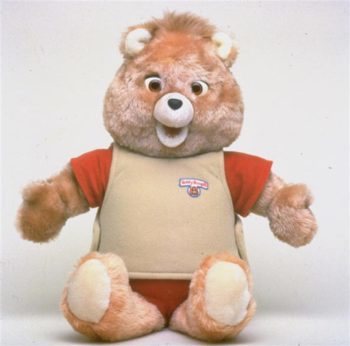
Everyone remembers Teddy Ruxpin, but it might surprise you to learn what a best-selling toy he/it was. He ruled Christmas and all of 1985 which is pretty remarkable considering all the epic toys that were also out at that time.
Teddy Ruxpin – the talking bear – is actually a pretty amazing piece of technology and an interesting story. He was designed by a former employee of Disney who got inspiration from the Country Bear Jamboree, Chuck E. Cheese, and the animatronic characters from Welcome to Pooh Corner.
Teddy started out as just a head on a stick as a prototype but was pitched to head of Atari, Don Kingsborough. He was able to see the possibility of this thing being successful as there were some real talent and creativity behind it. The goal with Teddy Ruxpin – like most toys – was to get it out by Christmas. This gave its creator only 6 months, but he was able to make it happen.
$60 million was put into the production to get him finished in time, and it worked. World’s of Wonder – who released Teddy- sold a staggering 41,000 units in the first 30 days. The plan was to launch him with his own series but it turns out they didn’t need it. From just September to the end of 1985, Teddy Ruxpin brought in $93 million. Converted for today that’s about $220 million.
The story of Teddy Ruxpin is actually a bit more bizarre than all this so check out my separate article all about it!
1986 – G.I. Joe
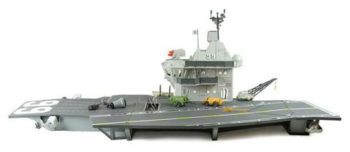
This may seem surprising due to it being later in the decade, but from a survey of 3000 U.S. retailers published in the November issue of Toy and Hobby World magazine, G.I. Joe was the best-selling toy of 1986.
The toys came out in 1982 accompanied by a Marvel Comic series, and the cartoon series came out in 1983 but the success in 1986 makes sense for a few reasons:
- The cartoon was now more established and part of the popular zeitgeist for every young male in existence.
- All the characters, vehicles, and shows had been released creating one giant collective and complete universe
- The cartoon show was established as must-watch TV after school airing in that 3 to 6 pm timeslot
- The cartoon went into a full series in 1985 with 55 episodes after previously existing as 30-second cartoon commercials in 1982 then two different 5-part mini-series in 1983 and 1984
Fun facts from Christmas of 1986: Teddy Ruxpin was still the # 4 best-selling toy, Cabbage Patch Kids were still at # 6, and at number 2: The adorable Pound Puppies (check out my article on them here – its a very interesting story)
1987- Jenga
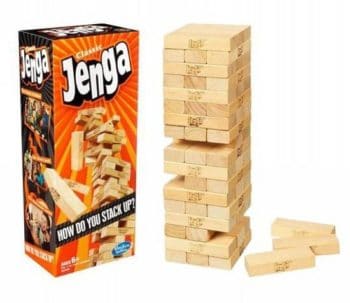
I think every household on earth has Jenga somewhere in it. You may think of Jenga as an ancient type of game but it was actually a modern, original idea. It was created in England by a woman named Leslie Scott.
Scott grew up between England and East Africa and it was a game that her family had created in the 70s. They lived near a sawmill and purchased some blocks and created a stacking game that they found fun and very addictive.
When deciding what to call it they came up with a few names including ‘Chezza’ but went with a variation of the Swahili name ‘cojenga’ which means “to build”. Jenga started as a grassroots project in 1982 and would be sold at toy fairs.
The first commercial launch of Jenga would happen in Canada in 1985 before being released worldwide. Toy company Irwin was behind this but hated the name Jenga. They thought that it wouldn’t mean anything to anyone and they didn’t know how they would sell and market this game.
Scott stuck to her guns to keep the name Jenga and it was fully launched at the Toronto Toy Show in 1986. 400,000 orders were placed right there which is pretty insane. In 1987, Irwin licensed it to Schaper Toys in the U.S. who was bought by Hasbro who released Jenga under the Milton Bradley name.
Jenga then really took off with a very popular and memorable commercial launching it.
Jenga was a massive hit making it the must-have toy for that year. It continued to sell at least 4 million units from that year up until the year 2000.
Check out my full blog all about the story of Jenga!
1988- Koosh Ball
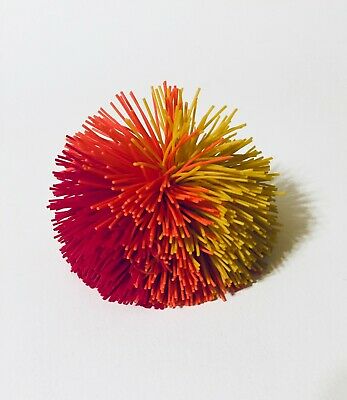
Probably the most surprising on this list, and one that you might not even recognize the name of right away. The unfortunate stoner-named Koosh Ball was the best-selling Christmas toy of 1986. Like most toy ideas, the simplicity of the koosh Ball is what helped lead to its success.
It’s basically a soft squishy ball with rubber strings attached. You could throw it as hard as you wanted (and I tried) and not really hurt anything – or anyone. I think the big appeal here is that they were cheap. Every kid could get one for Christmas as they were inexpensive and not felt left out of the hot toy at the time. Compare this to asking for a Teddy Ruxpin which back then cost the equivalent of $160 – plus the cassettes were $12.95 a pop.
The koosh ball was created by Scott Stillinger who wanted something to help his kids learn to catch. He started putting something together using a box of rubber bands and came up with a prototype that he brought to his brother in law – who worked for Mattel.
The ball is made of 2000 rubber strings and the name Koosh comes from the sound made when you caught it. Some people didn’t get it at first but consumers did making it a Christmas best-seller. There would even be a comic book spinoff.
1989 – The Game Boy

I’m not sure if the Game Boy is considered a video game, a toy, or if that’s the same thing, but according to Reader’s Digest, the Game Boy was king in 1989. Video games were back on the upswing mostly thanks to the NES, but the Gameboy really caused a frenzy. It seems kind of quaint now, but being able to take your video games on the go with you was pretty mind-blowing. And these weren’t the crappy handheld games of yesteryear.
The Game Boy is, of course, the 8-bit handheld device released by Nintendo. It came out first in Japan in April of 1989, then in North America in July. The cool thing with the Game Boy was that you felt like you had a portable NES, it even had the same familiar controller built into it.
It was black and white, but it didn’t matter, the whole concept worked. Not to mention the monumental success of one of the featured games: Tetris. Tetris would end up being the driving force behind the early success of the game boy as it is one of the most popular – and addicting – games of all time. (check my article all about Tetris here!)
When the Game Boy was released in North America, it sold 40,000 units its first day. It was then off and running to become the hottest toy of Christmas, and the year.
So, Which Toy Was The Overall Best-Selling Toy Of The 80s?
Let’s look at what, from all of these, was the number one toy overall for the decade. We actually have to dismiss a few things here when trying to find a winner. We’re determining this by toys that were released in the 1980s because some toys created in earlier decades such as Barbie, Lego, and Hot Wheels continued to be massive sellers in the 80s
But after those ones, one toy emerges as the single best-selling toy of the 80s. Drum roll…
The Rubik’s Cube.
It can’t be understated what a phenomenon – and massive seller – The Rubik’s Cube really was. It would end up selling an astonishing 350 million units. This is another one of those toys that just seemed to exist in every house. A lot of times, you probably don’t even remember buying or getting one. You just seemed to always have it.
It’s not only the biggest seller of the 80s but one of the most successful toys in history. You’ll probably never look down your nose at Rubik, The Amazing Cube again…
If you’re looking for the perfect gift for the 80s lover in your life (or for yourself) just check out my Resources Page that features a ton of cool 80s products you can still buy!



Comments
Comments are closed.